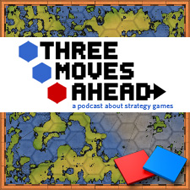I’ve spent the last few days knee deep in two new releases, the Vae Victis expansion for Europa Universalis: Rome and Tilted Mill’s light strategy game Mosby’s Confederacy. It’s hard to conceive of two games so different from each other on the surface, but both use characters as the foundation of the gameplay. Yes, there are resources and cities and upgrades; all the usual strategy stuff. Still, the effect of all actions is dependent on the skills of individual virtual people.
You can draw a continuum from those strategy games where there are in game characters have functions, but no variance beyond that (Civilization IV‘s great people, workers in a city builder like Children of the Nile) to those titles where characters are the gameplay (The Sims). Mosby’s, for example, is a lot like X-Com; soldiers have skills, gain experience and risk death. Few games have been as successful as X-Com in creating that bond between you and random grunts.
Characters present problems for strategy game design. First, there is a risk that you will never move beyond the design foundation; the individuals as statistical placeholders, a multiplier to cause and effect relationships in the rule set. Second, there more deeply you try to draw out distinctions between characters, the greater the burden you place on the gamer to figure out the consequences of a particular action. Third, the more characters and traits you have, the less pressure there is to balance trade-offs since a good fit can be easily found and the more likely a gamer is to emphasize one or two traits at the expense of others.
In an email exchange with Michael Akinde, who is making his own character based strategy game, the designer told me:
The “too much going on syndrome” is probably the biggest problem with any kind of character-oriented gaming. Even though I believe the problem is worse in real-time games, it’s one I’ve been spending a lot of time on myself as well. Figuring out how to ensure that the player receives appropriate feedback to allow him or her to take appropriate action is tough.
It’s all about the feedback, and there are good and bad ways to do it. Feedback depends on differentiation, and not just differentiation of roles. Though there is a natural tendency for the strategy game audience to want dozens of traits, attributes and skills, it’s worth remembering that Civilization IV – not a character based strategy game in any important way – manages character differentiation by just ascribing two traits to a leader. I already know enough to quit a game if I find Shaka, Alexander and Montezuma on my continent.
One of the best ways, and one not well exploited by either Mosby’s or EU: Rome is visual recognition.
X-Com was as immersive as any game to ever be released in any genre and visual recognition was one of the untold secrets of its success. The soldiers mostly look the same, but the genius decision was to have the skill lines along the bottom of the screen so clearly associated with a name. Before long, you would think of Buzz Lightyear as your sniper or laser pistol guy or the one most resistant to damage. The skill sets became part of the character, and when a character improved or died, there were clear in game consequences. By the time you had highly developed ace alien killers, you already knew who could do what.
In Mosby’s Confederacy, not only the soldiers and characters recycle the same faces, preventing quick recognition but the skills and traits are either numbers or words, with no quick take on who is good at what. Why not give sharpshooters in Mosby’s a little rifle icon in the upper right, to show their preferred weapon? Why not have the colored skill ratings in a bolder font so you can pay attention to the color cue more than the number itself? The difference between a 32 and a 34 in courage is probably not all the great.
Even something as simple as wounds is a little mangled. Wounded soldiers are given a yellow screen, and that’s fine. But wounds below 50 per cent health are given a red one, and red is a color I would associate with death in this context, not grievous injury. Why not orange? And then red or black for death? (They use a skull and crossbones, which is fine, but consistency would demand a color more than a symbol?)
Crusader Kings used facial features to reinforce the idea that these characters were unique. Even though the world was huge, the number of characters you really had to watch was kept to a manageable level, and most could be distinguished in an instant. They had a funny beard or big nose or double chin. Though the numbers and traits were the game play, the look of every character made it easier to understand that these people had different skills and agendas.
EU: Rome tries to distinguish characters by their names, in even greater variety than you would have found in the real Rome. But with so many characters and so many traits in so many places, there needs to be more feedback. Why not forget the whole faux Roman bust thing and add more color and size to the portraits? Some Romans had prominent noses. Others had huge foreheads. Some were bald. The young Marcus Aurelius had rich curls.
Quick recognition of character desires and skills is not simply a matter of speed. It’s a matter of comprehension. The less thinking you have to do to figure out who is good at what, the more time you can spending weighing which skills you actually need for a given task. It puts the emphasis on decision making, not finding the information you need in order to make the decision to begin with. With better feedback about the characters, it becomes easier to develop feedback from the characters.

